New Zealand Journalists Explore Manila: A Dive into Media, Politics, and Culture
The Asia Media Centre organised a trip for seven media delegates across New Zealand to visit Manila. Journalists from TVNZ, RNZ, New Zealand Herald, Stuff, and BusinessDesk attended the biggest international media conference in the Indo-Pacific region spearheaded by the East-West Center.
In addition to participating in the conference, the delegates had the chance to explore the Philippine capital. They met influential figures from various sectors, including media, government, and private industries, and delved into the rich culture and history of the Philippines. This article covers the overview of the trip.

L-R: Colin Peacock of RNZ, Riley Kennedy of BusinessDesk, Corazon Miller of TVNZ, Carla Teng, Keiller MacDuff of Stuff, Toby Manhire of the Spinoff, Gill Bonnett of RNZ, and Sam Hurley of NZ Herald. AMC's media delegates to Manila.
Known as the Pearl of the Orient Seas, the Philippines occupies a strategically important location between the Pacific Ocean and the contested waters of the South China Sea. This region is a focal point of geopolitical tension, especially between China and the United States, with both powers vying for influence.
With over 7,600 islands, this archipelago is one of the most disaster-prone nations globally due to its geographical positioning. Situated within the Pacific Ring of Fire, the country is highly susceptible to seismic and volcanic activities. Additionally, being along the Pacific typhoon belt, the Philippines experiences over 20 typhoons annually. Its extensive coastline also makes it vulnerable to rising sea levels.
With a population exceeding 118 million, the Philippines ranks as one of the world's highest in social media consumption, according to 2024 Global Digital Report, exposing Filipinos to misinformation and disinformation.
These factors influenced the East-West Center's choice to select the Philippines as the host for this year's International Media Conference, a biennial event that brings together journalists from across the Indo-Pacific region.
Benefits of AI in Journalism?
Scepticism about Artificial Intelligence in journalism is not a secret. The new technology threatens journalists by potentially replacing their jobs. The greater danger, however, is the misuse of AI to spread misinformation, both intentionally and unintentionally. Despite these clear risks, AI's growing influence is inevitable, and newsrooms are no exception.
At a recent conference, experts discussed AI's benefits for journalism. For instance, Rappler, an online newspaper in the Philippines founded by Nobel Peace Prize laureate Maria Ressa, has embraced modern technology since its inception in 2010. Don Kevin Hapal, Rappler’s head of data and innovation, explained that they use AI to summarize complex data for the general public. Their newsroom leverages AI for “civic engagement wherever possible,” openly disclosing its AI-powered content to readers.
Hapal shared that during the 2022 Philippine elections, they used ChatGPT to create profiles for 50,000 candidates, freeing up reporters to focus on more significant stories. He emphasised that human creativity and critical thinking remain paramount, as all content undergoes human review.
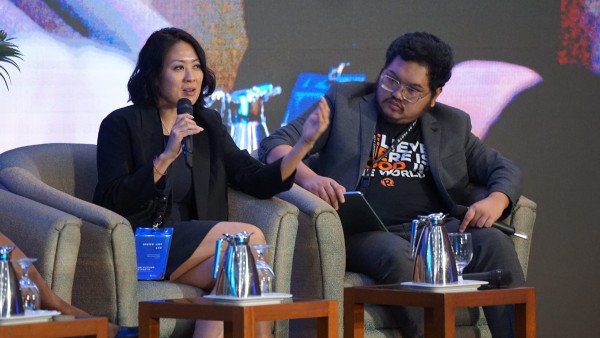
Don Kevin Hapal from Rappler, seated on the right, highlighted the advantages of AI in their newsroom. Photo: East-West Center
Some newsrooms around the world use AI for tasks like audio transcription, translation, and captioning. Despite these benefits, AI still presents significant risks as a tool for spreading disinformation, particularly during election periods. The rapidly evolving nature of this technology makes it challenging to regulate, not only in newsrooms but across the board. Nevertheless, bringing journalists from different parts of the region together in one room is a positive step towards addressing the impacts of AI, both beneficial and detrimental.
Climate crises and solution journalism
During the second day of the conference, Sylvia Earle, an internationally acclaimed marine biologist, urgently noted that our planet is "way past emergency" concerning climate crises.
She urged journalists to shift towards a more serene style of reporting that focuses on solutions for preserving the planet, moving away from the pervasive "doom-and-gloom" narratives.
A Pasifika journalist and director of Climate Journalism at the Solutions Journalism Network, Lagipoiva Cherelle Jackson, pointed out the vivid contrast between typical climate reports, which often "catastrophise" developments, and the more positive reports from the Pacific Islands that spotlight ongoing initiatives and their successes.
This approach is dubbed "solutions journalism" at the conference, which not only provides a more hopeful perspective but also engages readers by showcasing practical ways communities are addressing environmental challenges. By highlighting successful initiatives, it illustrates that positive change is not only possible but already happening. This can inspire more proactive attitudes and actions among the public and decision-makers alike, fostering a culture of innovation and cooperation in tackling climate issues.
"These kinds of stories are often told in local media... small newspapers. You'll never really see this in large newspapers," said Jackson, noting that this often stems from a journalist's deep familiarity with or exposure to the local context.
"The utilisation of indigenous knowledge, empowerment of local journalists... Utilising platforms and amplification of news media... really amplifies the solution," she added.
Tension in the West Philippine Sea
On the final day, geopolitical tension in the Indo-Pacific was the centre of the conference where issues between global power competition between China and the United States were discussed. Gracing the room full of over 400 journalists, Philippine Foreign Affairs Secretary Enrique Manalo spotlighted the issue on the West Philippine Sea, days after the June 17 incident in the contested water where a Filipino navy serviceman lost his thumb during a confrontation with the Chinese Coast Guard.
Manalo said, “The ability of the press to report on global events and the ability of people to appreciate and understand these events is under sustained attack from disinformation and cyberattacks. Many, many countries, including the Philippines, have been targeted by malign actors, wantonly exploiting technology to distort and manipulate facts, as so-called ‘alternate realities,’ drown out the truth and adversely affect the public discourse.”
Manalo added that the current Marcos government “has been working hand-in-hand with the media to ensure that the public possesses the facts.” Such efforts, he said, “form an essential part of our commitment to a rules-based international order and our determination to protect and preserve our sovereign rights and jurisdiction, especially in the West Philippine Sea. Our friends in the media have been able to report on these developments freely, without force and intimidation from government.”
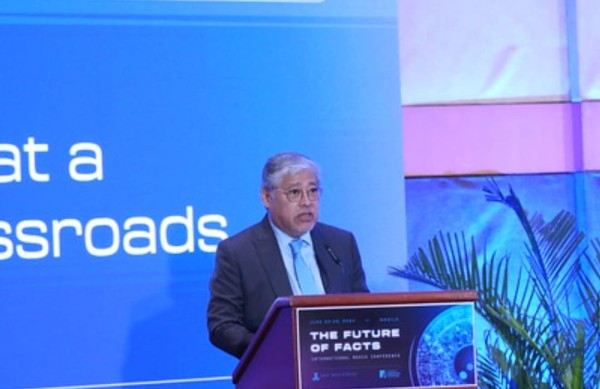
Philippines SFA Enrique Manalo gave the opening remarks on the final day of the international media conference. Photo. East-West Center
United States Ambassador to the Philippines MaryKay Carlson expressed similar sentiments, saying: “As journalists, you are on the front lines covering conflicts and crises, elections, important global meetings that chart the future of our planet, and every other manner of major events. Let me assure you that here in the Philippines, I'm reading what you write, and I know that my fellow ambassadors and others across this region and around the world are doing the same. Your reporting is essential for us to understand when our strategy is working, when it isn't, and how we need to adjust. And in a large, complex, dynamic region like the Indo-Pacific, that perspective is absolutely essential.”
In addition to the main conference, breakout sessions and workshops were offered, allowing journalists to choose topics that would benefit them both personally and professionally. These topics ranged from AI, business, media marketing, and environmental conservation to the challenges of covering China, among many others.
Connecting with the local media
Besides attending a conference, AMC arranged a two-day immersive experience in the Philippines for media delegates. To foster understanding with their Filipino counterparts, the delegates visited two local media outlets: TV5 Network Inc. and the Philippine Star.
At TV5, the delegates learned about the station’s history from its inception in the 1960s, its shutdown during Martial Law, and its reopening in the 1990s. TV5 is the second-leading broadcasting station in the Philippines. During their visit, the delegates experienced a live broadcast of the morning news programme, Güd Morning Kapatid.
Unlike New Zealand’s morning news shows, Filipino programmes are more focused on fun and entertainment with a touch of news. The delegates watched Jed Madela, a premier balladeer, perform live to promote his upcoming concert. Towards the end of the show, the hosts had a relay race, turning the studio into a lively, fun-filled environment.
According to Mary Macalma, News 5 administrator, this format reflects Filipino culture, emphasising family. The station’s tagline, "Kapatid," means sibling in Tagalog, treating viewers as family members. This family-oriented approach is common across competing stations like GMA Network Inc. and ABS-CBN.

Delegates watching the live studio airing of TV5's morning news programme. Photo: AMC
Regarding news content, Macalma explained that prime-time news programmes often highlight local police reports due to their captivating narratives and visuals, which help retain viewers and boost ratings and advertising revenue.
Unlike New Zealand, the Philippines has no public broadcasting television network, and most stations are commercial, leading to fierce competition. This structure has been in place since 1987, as mandated by the Philippine Constitution, which limits media ownership and management to Filipino citizens or wholly Filipino-owned corporations, cooperatives, or associations. The regulation was established after the country experienced media censorship during Martial Law under President Ferdinand Marcos Sr.
Despite being considered the “freest press in Southeast Asia,” the Philippines sits near the bottom quarter of Reporters Without Borders’ global Press Freedom Index. Filipino journalists still face harassment, such as lawsuits and the removal of commercial franchises.
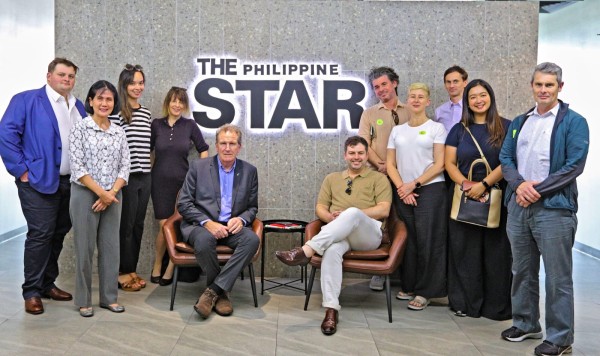
Media delegates with Philippine Star's editor-in-chief, Ana Marie Pamintuan, and Graeme Acton, manager of AMC. Photo: The Philippine Star
The delegates met one of these courageous Filipino journalists, Ana Marie Pamintuan, the editor-in-chief of the Philippine Star, who is facing her 35th libel case filed by a local Congressman. Pamintuan only moves freely due to bail but always carries legal documents to present to the police in case of an arrest attempt. This interaction provided delegates with insight into the operations of one of the country’s leading newspapers and the challenges faced by Filipino reporters.
Toby Manhire, editor-at-large of the Spinoff and one of the media delegates, reflected on the experience: “It is always enlightening to visit other places and recognise how fortunate we are in New Zealand to have such freedom. The Philippines is complex in terms of media freedom. There are many pressures on the Philippine media, many of which persist today, including libel suits. It’s very eye-opening to talk to Filipino media professionals who are doing incredible work under challenging circumstances.”
Engagement with the Office of the President
The highlight of the familiarisation tour was the engagement with the Presidential Communications Office (PCO), the communication arm of the Office of the President of the Philippines, currently led by President Ferdinand “Bongbong” Marcos Jr. The discussion took place at the Malacañang Palace, the official residence of the president.
The delegates met with Assistant Secretary Dale de Vera, Office of the Press Secretary Director Cris Villonco, Director for Strategic Communications Sheryl Mundo, and other officials.
The roundtable focused on the PCO’s role in information dissemination, ensuring that the president's policies, mandates, and advocacies reach the general public through the utilisation of both traditional and new media channels.
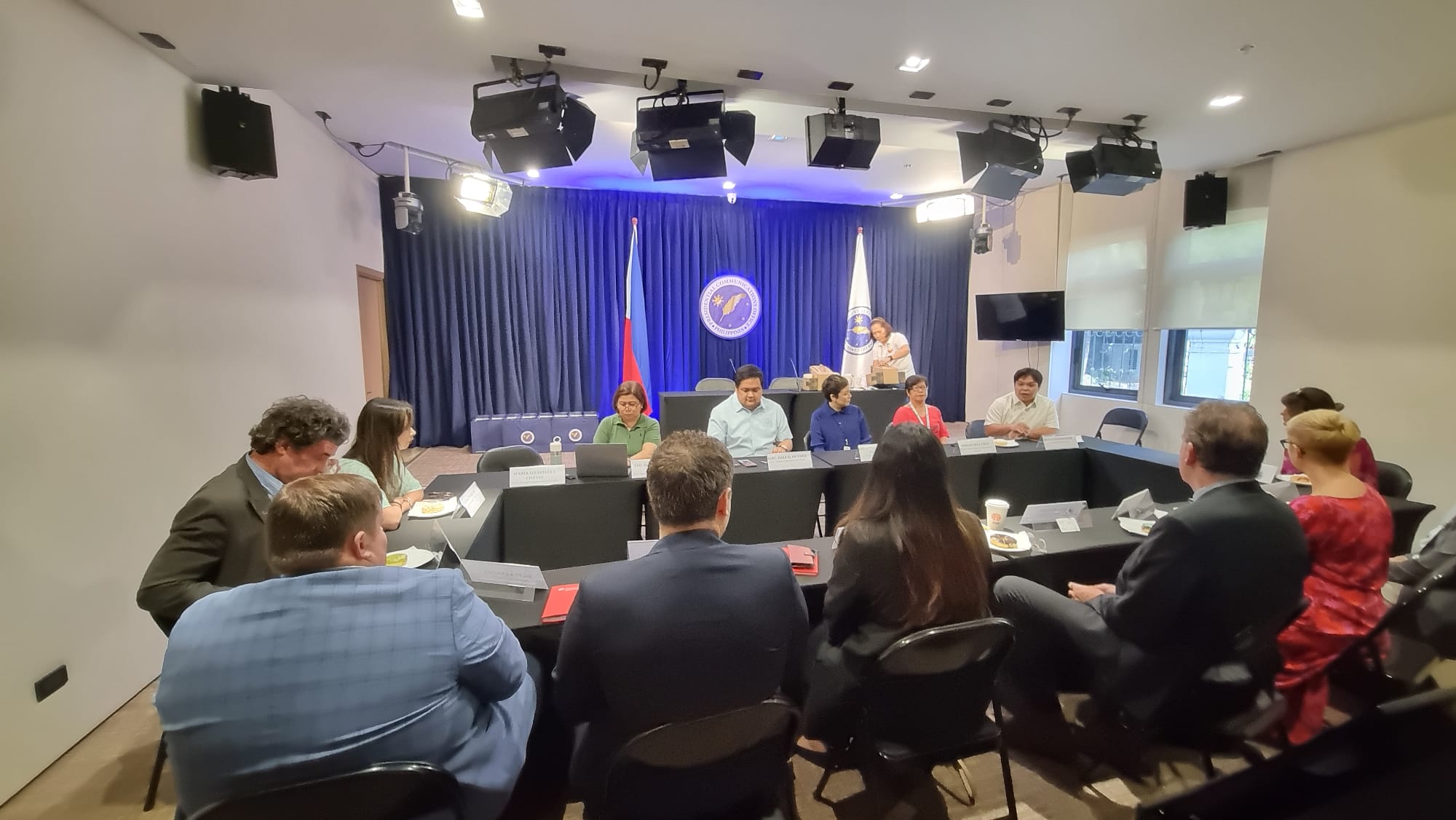
Media delegates' roundtable with officials from the President's Communications Office. Photo. AMC
Boarding the presidential bus, the delegates toured the Presidential Museum and the Bahay Ugnayan. The Presidential Museum, a renovated mansion within the Palace complex, showcases the history of past presidents, from the first Philippine president, General Emilio Aguinaldo, to the current president, Marcos Jr. The Bahay Ugnayan, a two-storey house, highlights the campaign tandem of Bongbong Marcos Jr. and Vice President Sara Duterte.
Ironically, during the delegation’s visit to Manila, Sara Duterte resigned from her cabinet position as Secretary of Education, a move that reportedly ended the political alliance between the Marcoses and the Dutertes.
The PCO team did not divulge too many details, simply stating that the president respects the vice president’s decision.
Overall, the interaction with President Marcos Jr.’s communication team was memorable, providing insights into the current administration’s flow of information on topical domestic and international concerns.
A glimpse into the Philippine history
A familiarisation tour would not be complete without cultural visits. To understand the Philippines and Filipino culture, the delegates toured the Ayala Museum and Intramuros.
The Philippines has a colourful history, having been colonised three times – by the Spanish, Americans, and Japanese. Before delving into this history, the delegates toured the Ayala Museum’s Gold of Ancestors exhibit, which showcases pre-colonial gold from the Philippines. This exhibit highlights the Austronesian migration, where indigenous people from Taiwan travelled to the Philippines and spread the Austronesian language commonly spoken in the country and their culture.
Similar to the Māori people of New Zealand, the ancestors of Filipinos are the Austronesians from Taiwan, providing a shared connection through similar roots. The exhibit features over a thousand pieces of pre-colonial gold from the 10th to the 13th century.
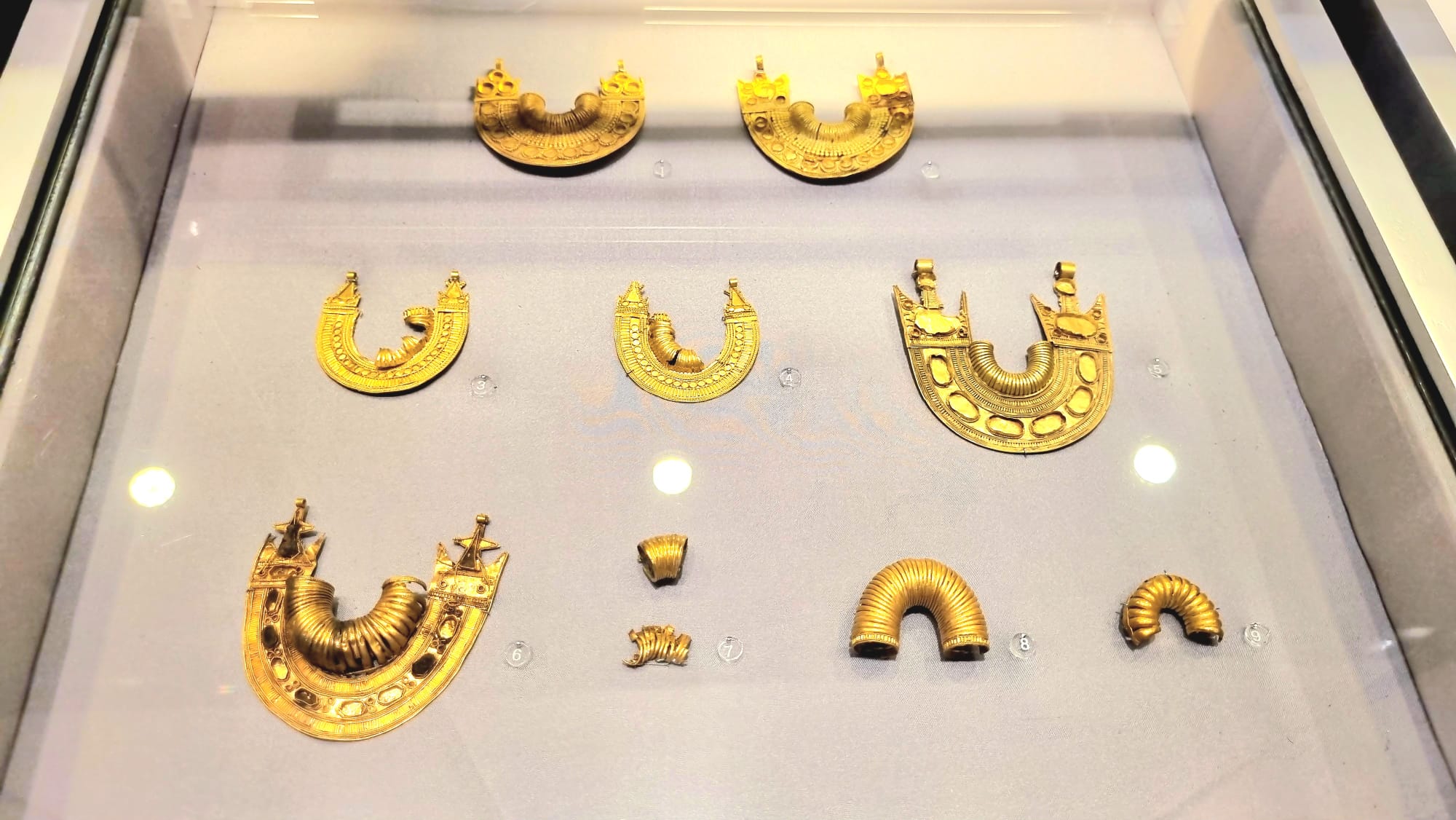
Ayala Museum's display of over a thousand gold artefacts honours the advanced cultures that thrived in the Philippines prior to Western colonisation in the 16th century. Photo: AMC
This introduction provided the delegates with a better understanding when they visited the walled city of Intramuros, the original Manila established during the Spanish colonisation in the 16th century. Intramuros was the seat of power for the Spaniards, serving as the administrative centre where the Spanish government, military, and Catholic churches were based. Two of the most iconic churches are located within its walls: the Manila Cathedral and the UNESCO World Heritage site, San Agustin Church, which survived the battle during the Second World War.
Another site the group visited was Fort Santiago. During the Spanish era, it served as a key defence structure. It is also known as the place where the Philippine national hero, Dr. Jose Rizal, was imprisoned due to his influential writings that ignited Filipinos to revolt against the Spaniards. Rizal was locked in Fort Santiago before being executed in Luneta Park in 1896.
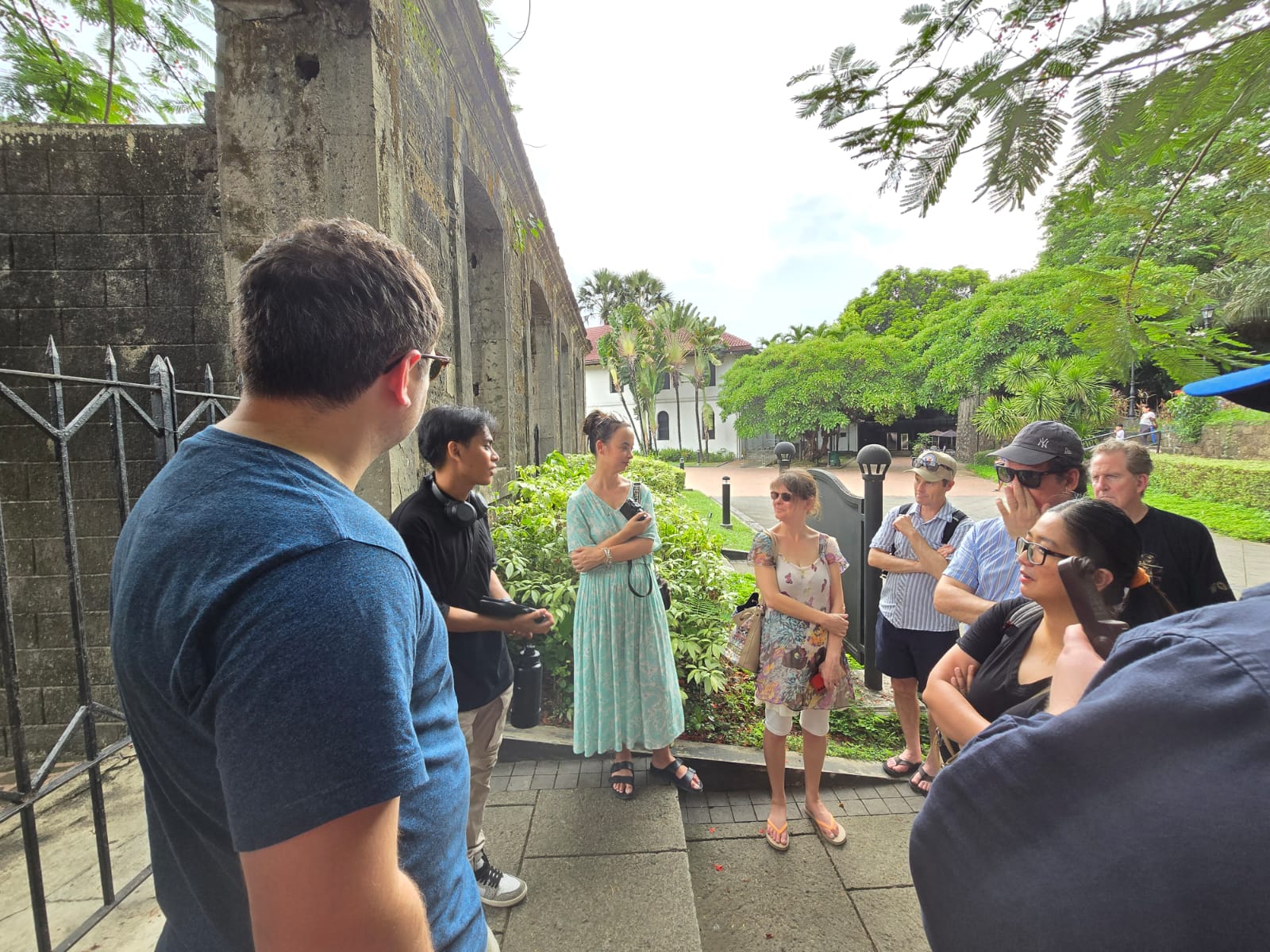
Visiting Fort Santiago in Intramuros. Photo: Keiller MacDuff
In the midst of World War II, the Japanese Imperial Army transformed Fort Santiago into a prison and interrogation centre. Here, countless Filipinos, Americans, and other Allied soldiers endured brutal suffering. The conditions within the fort's dungeons and cells were dire, with rampant overcrowding, starvation, disease, and relentless abuse.
The harsh environment led to the deaths of many prisoners, some of whom were executed within the fort's confines. The discovery of mass graves in and around Fort Santiago after the war revealed the extent of the atrocities committed by the occupying forces.
The impact of these events left a profound scar on the collective memory of the Filipino people. Today, Fort Santiago stands not only as a historical site but also as a poignant reminder of the resilience and suffering of those who endured the Japanese occupation. The fort's preserved dungeons, memorials, and exhibits honour the memory of the victims and educate visitors about this tragic period.
A touch of Aotearoa in the Philippines
Despite being overseas, the delegates took the opportunity to gather and share meals in celebration of Matariki. Hosted by the New Zealand Embassy in Manila's former Charge d’Affaires, Tim Given, and Second Secretary, David Pennycook, the group, along with invited Filipino stakeholders and influential figures in Philippine society, engaged in meaningful conversations. This gathering allowed the delegates to gain a deeper understanding of the country’s situation in sectors such as business, local politics, geopolitics, and media.
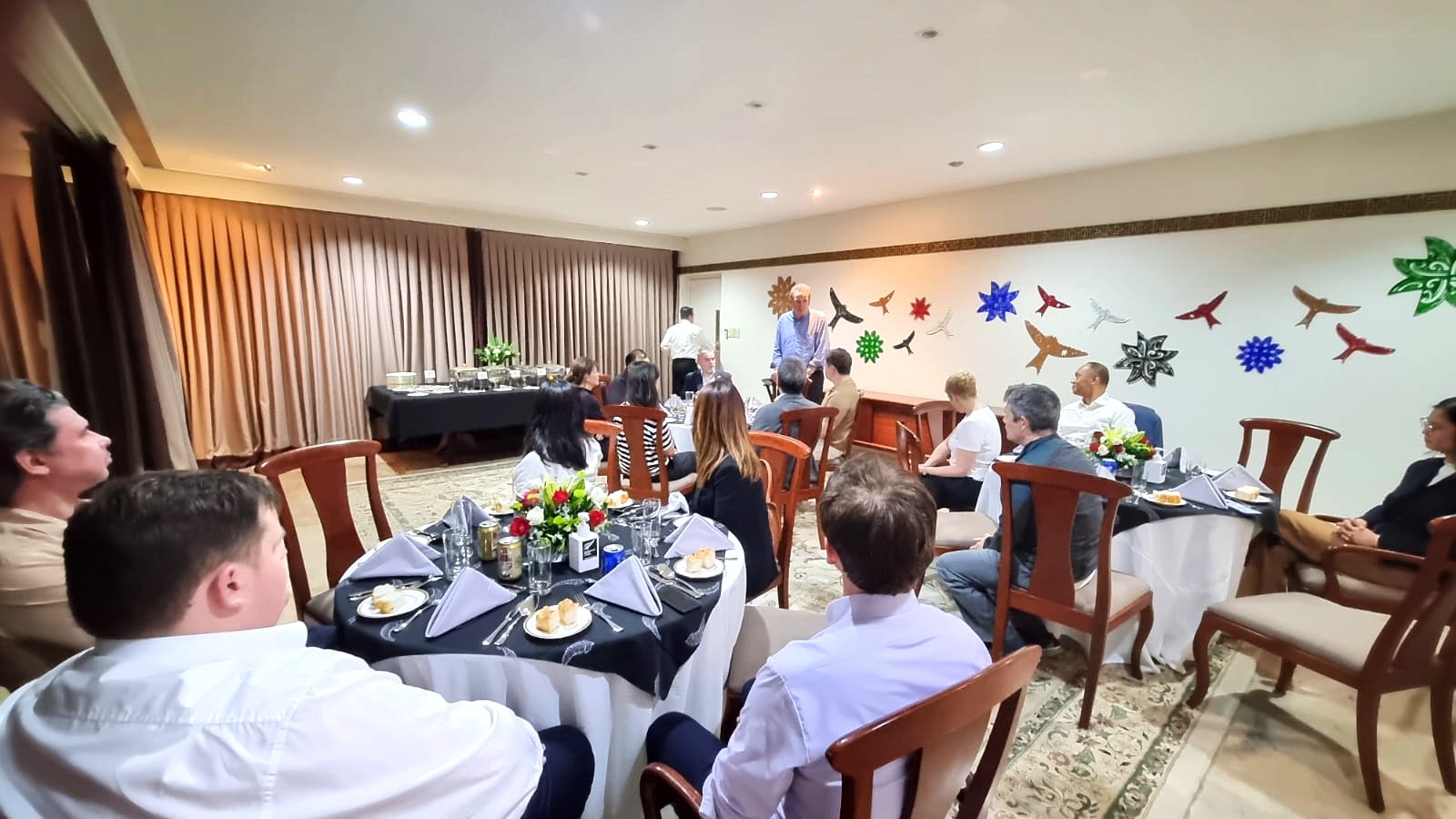
Celebrating Matariki at the New Zealand Official Ambassador's Residence in Manila. Photo: AMC.
Overall, the trip to Manila was filled with insightful exchanges and learning experiences, fostering connections between New Zealand and its Asian neighbours. This aligns with the core mission of the Asia New Zealand Foundation – helping Kiwis to thrive in and connect with Asia. Through the Asia Media Centre, Kiwi journalists are kept engaged and informed. This opportunity not only bridges the knowledge gap between Kiwis and Filipinos but also opens doors for greater collaboration between the two nations, which will soon be celebrating 60 years of diplomatic relations.
-Asia Media Centre
News reference: Teng, C. (2024). New Zealand Journalists Explore Manila: A Dive into Media, Politics, and Culture. New Zealand Journalists Explore Manila: A Dive into Media, Politics, and Culture. Available at: https://www.asiamediacentre.org.nz/features/new-zealand... [Accessed 24 Jul. 2024].
